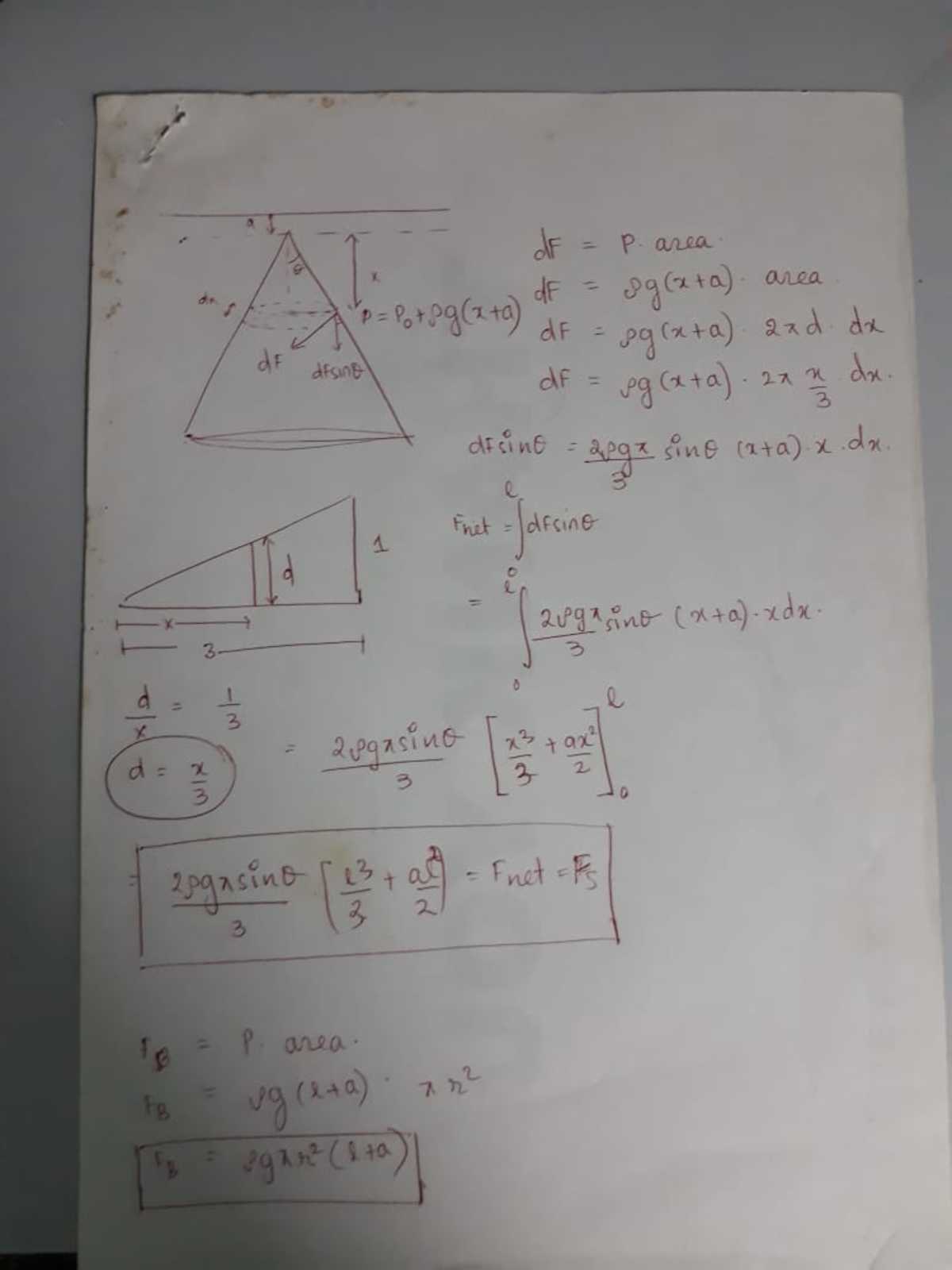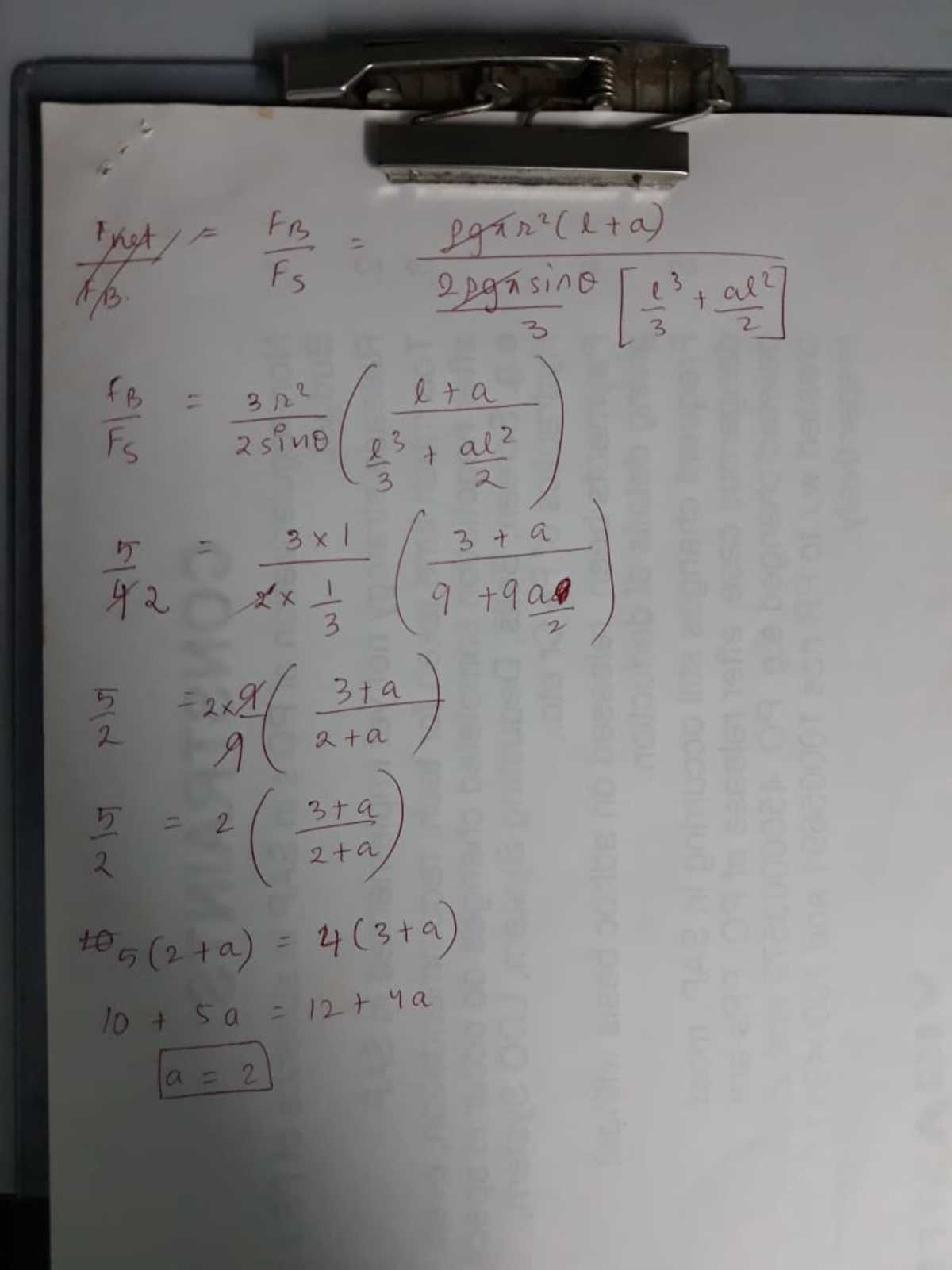Submerged Cone Pressure Ratio
A solid right circular cone is submerged beneath a body of water, such that its axis is aligned with gravity and its tip is pointing upward. Its base radius is and its height is
Let be the magnitude of the net upward vertical pressure force on the cone's circular base, and let be the magnitude of the net downward vertical pressure force on the cone's side.
If how far below the water surface is the cone's tip?
Details and Assumptions:
- Gravity is
- Water density is
- Neglect atmospheric pressure.
The answer is 2.0.
This section requires Javascript.
You are seeing this because something didn't load right. We suggest you, (a) try
refreshing the page, (b) enabling javascript if it is disabled on your browser and,
finally, (c)
loading the
non-javascript version of this page
. We're sorry about the hassle.


We know that the buoyant force is F = ρ g V , where ρ is the density of water. At the same time the buoyant force is the net upward force acting on the body, and in our case it can be expressed as F = F B − F S , since F B and F S are both vertical forces. Therefore we have
F S F B = 4 5 and
F B − F S = ρ g V .
We solve this for F B
F B = 5 ρ g V
On the other hand the pressure at the bottom of the cone is p = ρ g d , where d is the distance between the water surface and the base plane. We can calculate d by using F B = p r 2 π = r 2 π ρ g d and combining it with our result for F B
5 ρ g r 2 π 3 h = r 2 π ρ g d
where we expressed the volume with the height h and base radius r . We get
d = 3 5 h
and therefore the top is at the depth of
d − h = 3 2 h = 2 . 0 m